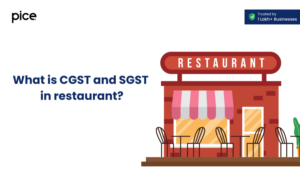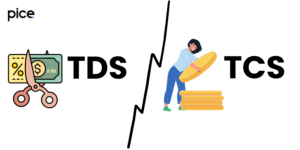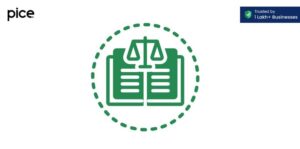Understanding the Composition Scheme under GST
- 20 Sep 24
- 14 mins

Understanding the Composition Scheme under GST
Key Takeaway
- The GST Composition Scheme simplifies tax compliance for small businesses by allowing them to pay a fixed percentage of their turnover as tax.
- Composition scheme participants are prohibited from making inter-state supplies, limiting their sales to within their own state.
- Businesses opting for the composition scheme cannot claim the Input Tax Credit, affecting their overall tax strategy.
- The scheme offers significantly lower tax rates, ranging from 1% to 5%, depending on the type of business, which can lead to substantial tax savings.
- Transitioning from the composition scheme to the standard GST regime is possible, providing flexibility for businesses as they grow.
Exploring the Composition Scheme in GST
The Composition Scheme under the Goods and Services Tax (GST) is a boon for small taxpayers, offering a simplified taxation process by allowing them to pay tax at a fixed percentage of their turnover. This scheme is designed with the intent to reduce the compliance burden on small businesses, making it easier for them to adhere to tax regulations without getting entangled in the complexities often associated with the standard GST system. Ideal for small traders, manufacturers, and restaurants, the Composition Scheme encapsulates the essence of a simplified tax structure. It allows eligible businesses to focus more on their operations and growth rather than on the intricacies of tax calculations and filings.
Key Rules of the GST Composition Scheme

The GST Composition Scheme, while simplifying tax compliance, comes with its set of rules and limitations that businesses must adhere to:
- Eligibility Criteria: The scheme is available to taxpayers with an annual turnover of up to Rs. 1.5 crores. This threshold is designed to include a significant portion of small to medium-sized businesses.
- Tax Payment and Filings: Unlike the regular GST regime that requires monthly tax payments and filings, composition taxpayers are required to pay taxes quarterly and file returns annually. This significantly reduces the compliance load.
- No Input Tax Credit: Businesses opting for the Composition Scheme are not eligible to claim the Input Tax Credit (ITC). This means they cannot deduct the tax paid on their inputs from the tax payable on their sales.
- Restriction on Interstate Sales: Composition scheme taxpayers are prohibited from making interstate sales, limiting them to selling goods and services within their own state. This restriction aims to simplify tax compliance further but could limit business expansion.
- No E-commerce Sales: Businesses under this scheme cannot sell goods through e-commerce platforms. This rule aligns with the restrictions on interstate sales and further simplifies tax compliance.
- Tax Rate: The scheme offers a much lower tax rate, ranging from 1% to 5%, depending on the business type (manufacturers, traders, or service providers), making it financially attractive for eligible businesses.
- Display of Registration Status: Businesses enrolled in the Composition Scheme must prominently display their composition status on every notice, signboard, and business correspondence, ensuring transparency with their customers.
These key rules of the GST Composition Scheme outline the framework within which eligible businesses can operate, offering them a simplified and less burdensome way to comply with India's GST regulations.
Eligibility Criteria for the GST Composition Scheme
The GST Composition Scheme is tailored for small businesses seeking a simpler taxation process, but not all businesses qualify for this scheme. To be eligible, businesses must have an annual turnover that does not exceed Rs. 1.5 crores in the preceding financial year. This scheme is primarily available to traders, manufacturers, and restaurants. However, service providers (except for restaurants) and businesses engaged in making interstate supplies, supplying non-taxable goods, or conducting transactions through e-commerce platforms are excluded from the scheme. Additionally, businesses must not sell goods that are not subject to GST to qualify. This eligibility criterion ensures that the scheme benefits small to medium-sized businesses, aiming to reduce their compliance burden.
Threshold Limits for the GST Composition Scheme

The threshold limit for the GST Composition Scheme is set at Rs. 1.5 crores of annual turnover, a figure that is periodically reviewed and adjusted by the GST council. This threshold is critical as it defines the scope of businesses that can opt for the scheme, aiming to include a wide range of small to medium enterprises. For businesses in special category states, the threshold limit is often set at a lower figure, acknowledging the economic dynamics of these regions.
It’s important for businesses considering this scheme to be aware of the specific threshold applicable to their state and sector, ensuring they meet the criteria for eligibility. This limit facilitates the inclusion of a significant segment of the business community under the scheme, helping them benefit from a simplified tax regime.
Advantages of Opting for the GST Composition Scheme
- Simplified Compliance and Reduced Paperwork: One of the most significant advantages of the GST Composition Scheme is the considerable simplification of the tax filing process. Businesses are required to file returns only once per quarter, as opposed to monthly submissions, reducing the compliance burden and paperwork.
- Lower Tax Rates: Businesses under the Composition Scheme benefit from significantly lower tax rates, ranging from 1% to 5%, depending on the business type. This can result in substantial tax savings compared to the standard GST rates, which can go up to 28% for certain goods and services.
- Lower Compliance Costs: The simplified compliance requirements translate to lower costs associated with tax administration. Smaller businesses, in particular, find this beneficial as it helps them allocate resources more efficiently elsewhere in their operations.
- Increased Liquidity: With lower tax rates and simplified compliance, businesses often experience better liquidity. The ease of tax payment under the Composition Scheme can help maintain a healthier cash flow.
Potential Downsides of the GST Composition Scheme
- Ineligibility for Input Tax Credit (ITC): A significant drawback of the Composition Scheme is that businesses cannot claim the Input Tax Credit. This means they cannot deduct the GST paid on their inputs from the GST collected on sales, potentially leading to higher overall costs.
- Restriction on Interstate Sales: Businesses opting for the Composition Scheme are prohibited from making interstate sales. This limitation can restrict business growth and expansion opportunities, confining operations to the state of registration.
- No E-commerce Sales: Composition Scheme taxpayers are barred from selling goods through e-commerce platforms. In today's digital age, this can be a considerable disadvantage for businesses looking to expand their reach online.
- Limited Applicability: Not all businesses can opt for the Composition Scheme. Service providers (with certain exceptions), businesses making non-taxable supplies, and those engaged in interstate supply are ineligible, restricting the scheme's applicability.
Choosing the GST Composition Scheme involves weighing these pros and cons carefully. While the scheme offers simplified procedures and lower tax rates, the restrictions on ITC, interstate sales, and e-commerce can pose significant limitations for some businesses.
Summary Table
| Aspect | Advantages | Downsides |
|---|---|---|
| Compliance | Simplified procedures; quarterly tax payments and annual returns. | Cannot claim Input Tax Credit; restrictions on interstate supplies and e-commerce transactions. |
| Tax Rates | Lower tax rates (1%-5%), leading to potential tax savings. | - |
| Operational Focus | More resources available for business operations and growth. | Geographical limitations restrict market expansion. |
| Costs | Reduced compliance costs due to simpler tax filing requirements. | Ineligibility for Input Tax Credit increases operational costs. |
| Market Reach and Supply | - | Restrictions on the type of transactions and sales channels. |
| Eligibility | Broad inclusion of small businesses across several sectors. | Specific exclusions apply, limiting the scheme's applicability to certain service providers. |
This table encapsulates the key advantages and potential downsides of the GST Composition Scheme, providing a quick reference for businesses considering this option under India's GST framework.
GST Tax Rates for Composition Scheme Participants
For businesses opting into the GST Composition Scheme, the tax rates are notably lower than the standard GST rates, designed to ease the tax burden on small businesses. The specific rates are as follows:
- Manufacturers and traders of goods: A nominal GST rate of 1% (0.5% CGST + 0.5% SGST) is applicable, making it an attractive option for small manufacturing units and traders.
- Restaurants not serving alcohol: Such businesses benefit from a 5% GST rate (2.5% CGST + 2.5% SGST), catering to the food service industry's needs.
- Other eligible service providers: Recently, the scheme was extended to include service providers, who are now charged a GST rate of 6% (3% CGST + 3% SGST), broadening the scheme's applicability.
These reduced rates aim to simplify tax calculations and liabilities, thereby supporting the growth and sustainability of small businesses across various sectors.
💡If you want to pay you GST with Credit card, download Pice Business Payment App. Pice is the one stop app for all paying all your business expenses.
Filing Returns under the GST Composition Scheme
Filing returns under the GST Composition Scheme is streamlined to reduce the compliance load on eligible businesses. The key aspects of return filing under this scheme include:
- Quarterly Payment of Taxes: While regular GST registrants must file monthly returns, Composition Scheme participants are required to pay their taxes quarterly, aligning with their reduced compliance requirements.
- Annual Return Filing: In addition to quarterly tax payments, businesses enrolled in the Composition Scheme must file a single annual return using GSTR-4 form by the 30th of April following the end of the financial year. This annual return consolidates the quarterly tax payments and summarizes the business's yearly sales and tax details.
- No Detailed Invoices Required: Unlike the standard GST regime, where detailed invoices must be uploaded, Composition Scheme participants are not required to provide invoice-wise details in their returns, further simplifying the process.
- Digital Compliance: The entire process, from tax payment to return filing, is facilitated through the GST portal, ensuring ease of compliance and transparency.
These provisions under the Composition Scheme significantly lower the administrative and regulatory burden on small businesses, allowing them more time to focus on their operational growth and customer service.
Registration Process for the GST Composition Scheme

Registering for the GST Composition Scheme is a straightforward process aimed at small businesses wishing to simplify their GST obligations. Here’s a step-by-step guide:
- Check Eligibility: First, ensure your business meets the eligibility criteria for the Composition Scheme, such as the turnover limit and the nature of your business operations.
- Log in to the GST Portal: Access the official GST Common portal and log in with your credentials. This is where you will submit your application to opt for the Composition Scheme.
- Submit Form GST CMP-02: Navigate to the services section and select the option to opt-in for the Composition Scheme by submitting Form GST CMP-02. This form signifies your intention to join the scheme from the beginning of the next financial year.
- Furnish Details in Form GST CMP-03: After opting for the Composition Scheme, you are required to furnish details of stock, including inputs and semi-finished goods, through Form GST CMP-03 within 90 days. This step is crucial for transitioning your tax liability to the Composition Scheme.
Once these steps are completed, your legal business will be registered under the GST Composition Scheme, allowing you to enjoy simplified tax reporting and payments.
Transitioning from the Composition Scheme to Standard GST
Businesses may find it necessary to transition from the GST Composition Scheme back to the standard GST regime for reasons such as exceeding the turnover limit or wishing to avail of input tax credits. Here’s how to make the switch:
- File Intimation of Withdrawal: The first step is to intimate the tax authorities of your decision to withdraw from the Composition Scheme by filing Form GST CMP-04.
- Revert to Standard GST Compliance: Upon filing the intimation, your business will be subject to standard GST rules, including regular filing of monthly or quarterly returns, maintaining detailed tax invoices, and being eligible to claim input tax credits.
- Pay Due Taxes: Transitioning businesses might need to pay any taxes due as a result of reverting to the standard GST system, including the reversal of input tax credits for stock in hand as of the date of transition.
- Notify Stakeholders: It’s advisable to inform your suppliers and customers of the change in your GST registration status, as it affects billing and tax credit mechanisms.
This transition process is designed to ensure businesses can smoothly adjust their tax practices according to their growth and operational needs, moving between the Composition Scheme and the standard GST system as required.
 By
By 


















